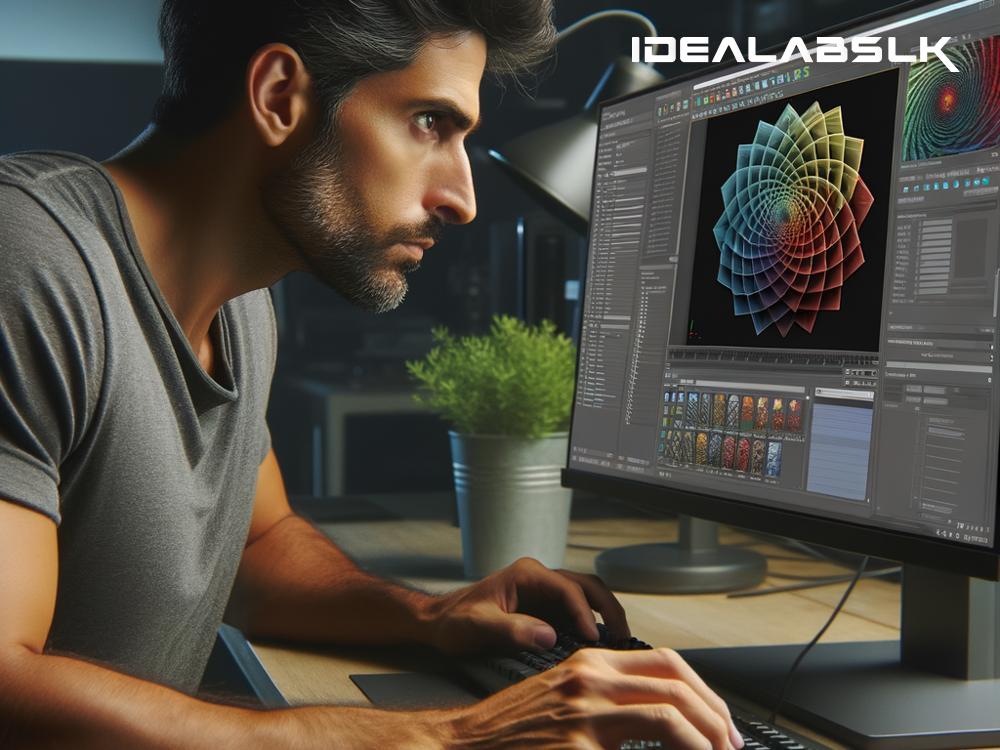Unlock the Power of GPU-Accelerated Software for Stunning Renderings
Have you ever watched a breathtaking movie scene or played a visually stunning video game and wondered how it looks so real and immersive? The secret behind those mesmerizing visuals is often the power of GPU-accelerated software that makes rendering—the process of generating photorealistic or non-photorealistic images from 2D or 3D models—much faster and more efficient. Let's dive into the world of GPU-accelerated rendering software and explore how it's changing the game for creators and designers across various industries.
What is GPU-Accelerated Rendering?
Before we delve into the specifics, let's break down the term "GPU-accelerated rendering". GPU stands for Graphics Processing Unit, a specialized electronic circuit designed to rapidly manipulate and alter memory to accelerate the creation of images in a frame buffer intended for output to a display device. In simpler terms, it's a piece of hardware in your computer or device specifically good at handling visual content.
Traditionally, CPUs (Central Processing Units) handled the task of rendering images, but GPUs are specifically designed to process multiple pieces of data simultaneously, making them significantly faster for graphical tasks. When software is optimized to leverage this power, it's referred to as GPU-accelerated. This advancement means incredibly detailed images can be rendered much quicker than before, transforming the workflow for artists and developers.
The Benefits of GPU-Accelerated Software
-
Speed: The most significant advantage is the speed. GPU acceleration can dramatically reduce rendering times from hours to minutes, enabling artists to iterate more rapidly on their work. This speed-up makes a difference in industries where time is of the essence, like film or product design.
-
Real-Time Rendering: Some GPU-accelerated software allows for real-time rendering, which means you can see the effects of lighting and material changes immediately as you make them. This capability is incredibly valuable for interactive design work, like video game development or virtual reality (VR) experiences.
-
Higher Quality Visuals: With the power of modern GPUs, artists and designers can achieve more realistic textures, lighting, and shadows in their work, pushing the bounds of visual fidelity.
-
Accessibility: As GPUs become more common and affordable, and with cloud-based rendering options on the rise, this powerful technology is becoming accessible to more creators, including freelancers and small studios.
How GPU-Accelerated Software Works
At its core, GPU-accelerated rendering software splits the work of image generation across hundreds or thousands of small, efficient cores within the GPU. This approach is vastly different from traditional CPU-based solutions, which typically rely on a much smaller number of powerful cores. By dividing the tasks so broadly, GPUs handle vast amounts of data in parallel, slashing render times.
Exploring GPU-Accelerated Rendering Software
Several leading software options cater to different needs within the rendering world. Some popular GPU-accelerated rendering software includes:
- Blender: An open-source 3D creation suite that supports all aspects of 3D work—including modeling, rigging, animation, simulation, rendering, compositing, and motion tracking. It has robust support for GPU rendering, making it a favorite among independent artists and small studios.
- OctaneRender: Known for its speed and quality, OctaneRender is a popular choice among professionals needing realistic renderings. It leverages the GPU to deliver impressive results quickly.
- Redshift: A powerful GPU-accelerated renderer built to meet the specific demands of contemporary high-end production rendering. It's tailored for creative individuals and studios of every size.
Getting Started with GPU-Accelerated Rendering
If you're keen to dive into the world of GPU-accelerated rendering, here's how you can get started:
- Hardware Check: Ensure your computer has a compatible GPU. Most modern GPUs offer some level of support for accelerated rendering, but for professional work, investing in a high-quality GPU is worthwhile.
- Choose Your Software: Consider your specific needs—such as the type of projects you work on and your budget—to select the software that's right for you.
- Learn and Experiment: Like any tool, there's a learning curve. Take advantage of online tutorials, forums, and communities. The more you experiment, the better you'll understand how to harness the power of GPU-accelerated rendering.
Wrapping Up
The evolution of GPU-accelerated software is transforming the landscape of digital design and rendering, making it faster and easier to generate high-quality visuals. Whether you're a seasoned professional or a hobbyist eager to explore the boundaries of 3D rendering, the power of GPU acceleration is making it possible to bring more creative visions to life than ever before. The future of rendering looks bright—and it's powered by GPUs.

